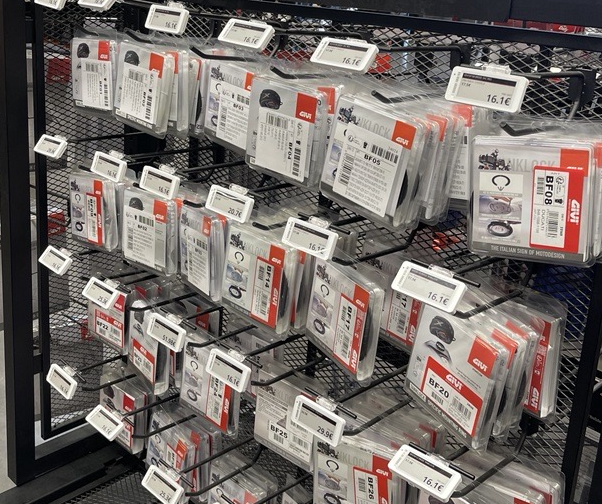In an era dominated by digital experiences, brick-and-mortar retailers face a clear challenge: how to stay agile, competitive, and relevant in a hyperconnected market. While e-commerce innovations get all the attention, physical stores are also undergoing their own transformation, and evolving advanced technologies such as electronic shelf labels are bringing changes to physical retail that cannot be ignored.
Electronic shelf labels started out as a simple replacement for paper labels. But in fact, they are becoming the foundation for a new in-store experience, one that is faster, smarter, and more connected.

From paper pricing to real-time pricing
Traditionally, in-store price updates are a time-consuming and labor-intensive task. Staff may spend hours or even days manually changing labels for thousands of SKUs. Electronic price labels eliminate this inefficiency. With just a few clicks, prices can be updated instantly across an entire store or retail chain.
Real-time price updates enable dynamic pricing strategies, allowing retailers to respond immediately to competitor promotions, supply chain changes, or excess inventory. For grocers, this helps them automatically reduce prices and reduce food waste. For electronics or fashion retailers, it’s a way to protect margins and respond to online pricing in real time.
Bridging the online-offline gap
Today’s consumers expect consistent prices – whether they shop in-store, online or via mobile apps. Electronic price tags (ESLs) help bridge the price gap between these channels, ensuring shelf prices match online prices. For retailers investing in an omnichannel strategy, ESLs provide critical synchronicity and trust.
Improving the in-store customer experience
In a competitive retail environment, every touchpoint counts, and the shelf edge is no exception. Electronic shelf labels (ESLs) are helping retailers transform the in-store experience from a static, transactional one to a dynamic, engaging one.
The growing number of interactive features available for ESLs, such as scanning the label for more product information, displaying stock levels or integrating with loyalty apps, turns every shelf into a smart, responsive touchpoint. This opens the door to smarter merchandising, guided shopping and a more engaging in-store experience. .
For retailers looking to differentiate through service and experience, rather than simply price, ESLs open up a new level of communication and engagement that traditional signage can’t match.
Investment for the Future
The retail storefront may be about to change—and that may be a good thing. As customer expectations rise and competitive pressures intensify, technology like electronic shelf labels will play a key role in ensuring that brick-and-mortar stores remain vibrant, relevant, and profitable.
At Minewtag, we believe that the future of physical retail hinges not on competing with e-commerce, but on complementing it—with smarter stores, connected shelves, and real-time responsiveness. Electronic shelf labels are no longer just operational tools; they are enablers of strategic transformation.











